The site where the colonial Stamp Act Congress met to draft its message to King George III claiming entitlement to the same rights as the residents of Britain and protesting "taxation without representation". Federal Hall is the name given to the first of two historic buildings located at 26 Wall Street in the Financial District of Manhattan, New York City.

The original, a Federal style structure completed in 1703, served as New York's first City Hall. The current structure, completed in 1842 and one of the best surviving examples of Greek Revival in New York, was built as the U.S. Custom House for the Port of New York.
After the American Revolution, in 1785, the building served as meeting place for the Congress of the Confederation, the nation's first central government under the Articles of Confederation. With the establishment of the United States federal government in 1789, it was renamed Federal Hall, as it hosted the 1st Congress and was the place where George Washington was sworn in as the nation’s first president. It was demolished in 1812.
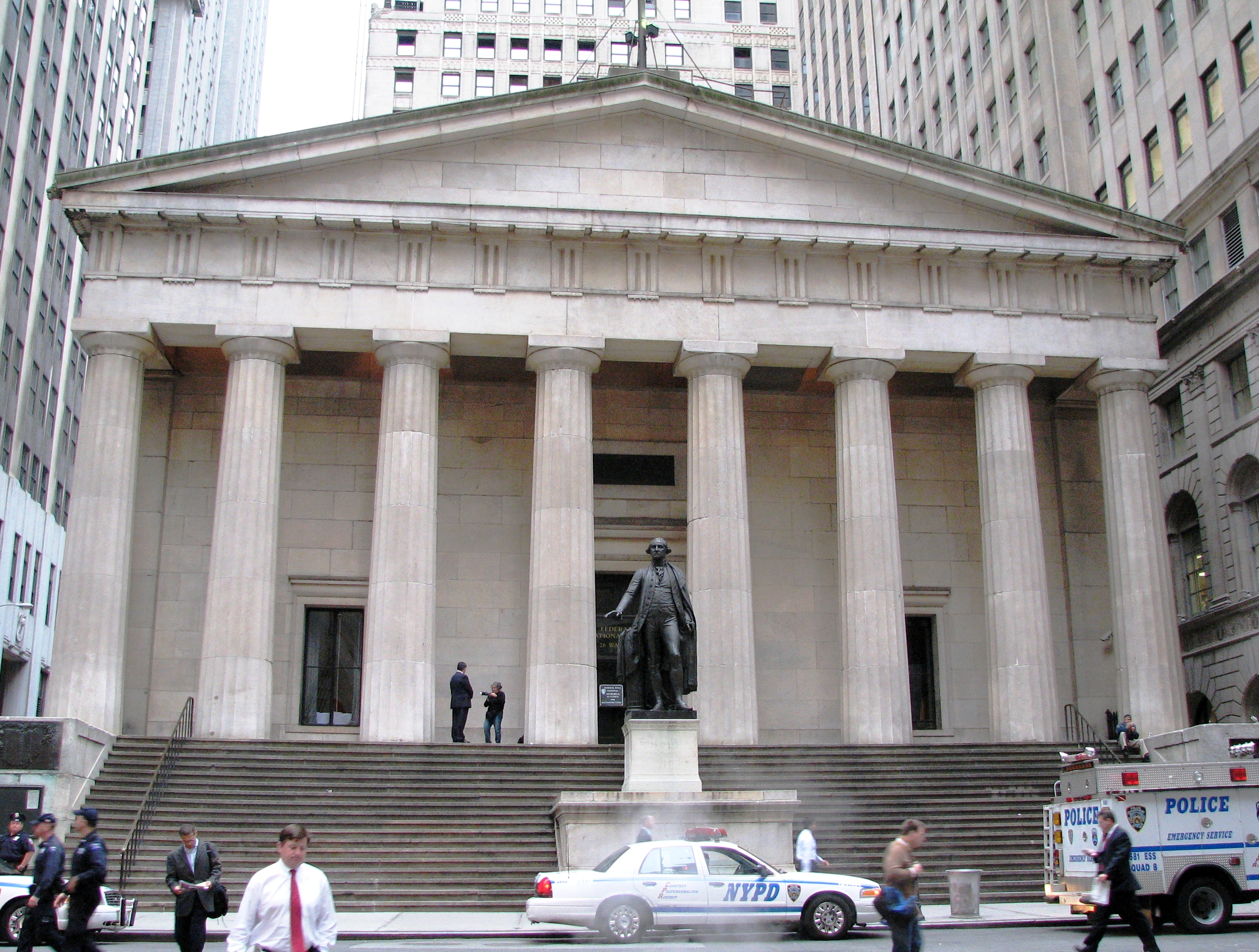
The building was designated as Federal Hall Memorial National Historic Site on May 26, 1939, and redesignated a national memorial on August 11, 1955. Administered by the National Park Service, it was listed on the National Register of Historic Places on October 15, 1966. Federal Hall was designated a landmark by the New York City Landmarks Preservation Commission on December 21, 1965.
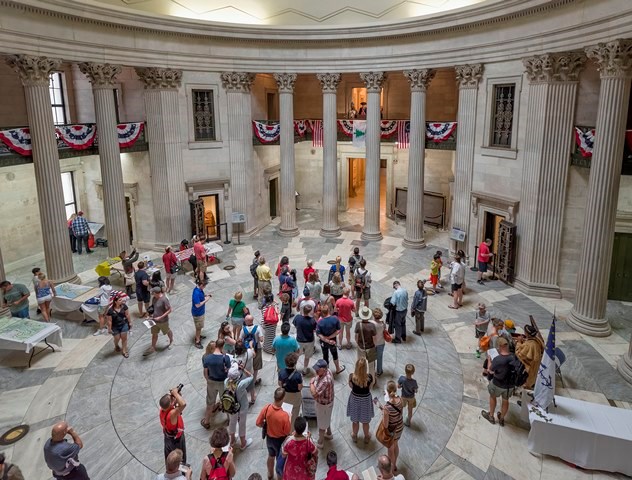
On September 6, 2002, approximately 300 members of the United States Congress traveled from Washington, D.C. to New York to convene in Federal Hall National Memorial as a symbolic show of support for the city, still recovering from the September 11, 2001 attacks. Held just four blocks from the former World Trade Center's Twin Towers, the meeting was the first by Congress in New York since 1790.
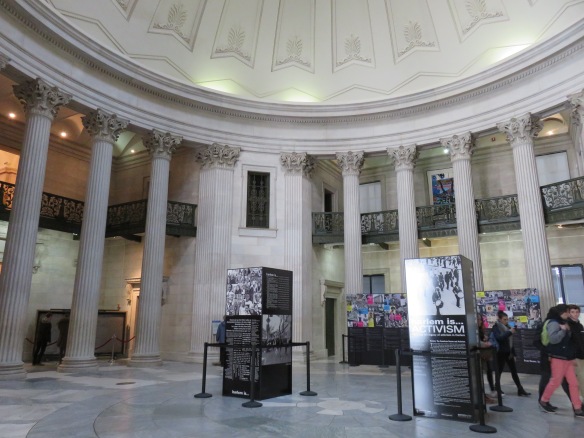
The site closed on December 3, 2004, for an extensive $16 million renovation, mostly to its foundation, after cracks threatening the structure were greatly aggravated by the collapse of the World Trade Center. In 2006, Federal Hall National Memorial reopened.

It was reported on June 8, 2008, that New York City Mayor Michael Bloomberg and ABC News invited 2008 United States presidential candidates John McCain and Barack Obama to a town hall forum at Federal Hall. Both candidates declined the offer "because they do not want it limited to one television network."
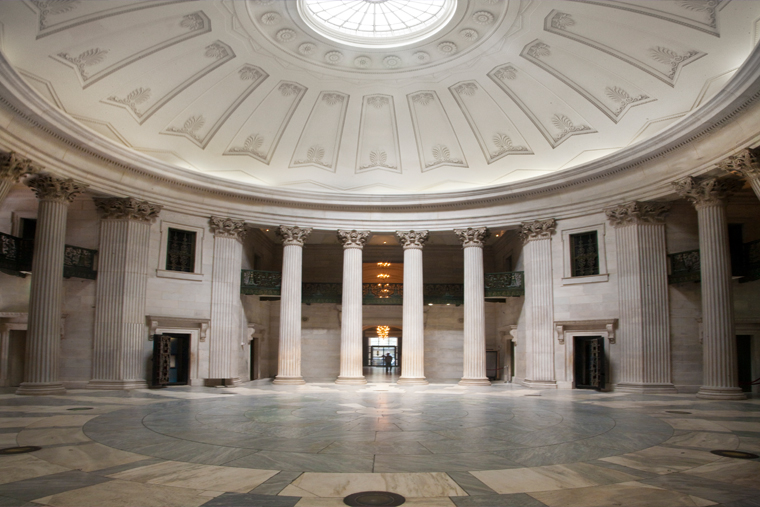
The National Park Service operates Federal Hall as a national memorial. As a national memorial, the site is open free to the public from 9 a.m. to 5 p.m. on weekdays. It has tourist information about the New York Harbor area's federal monuments and parks, and a New York City tourism information center.
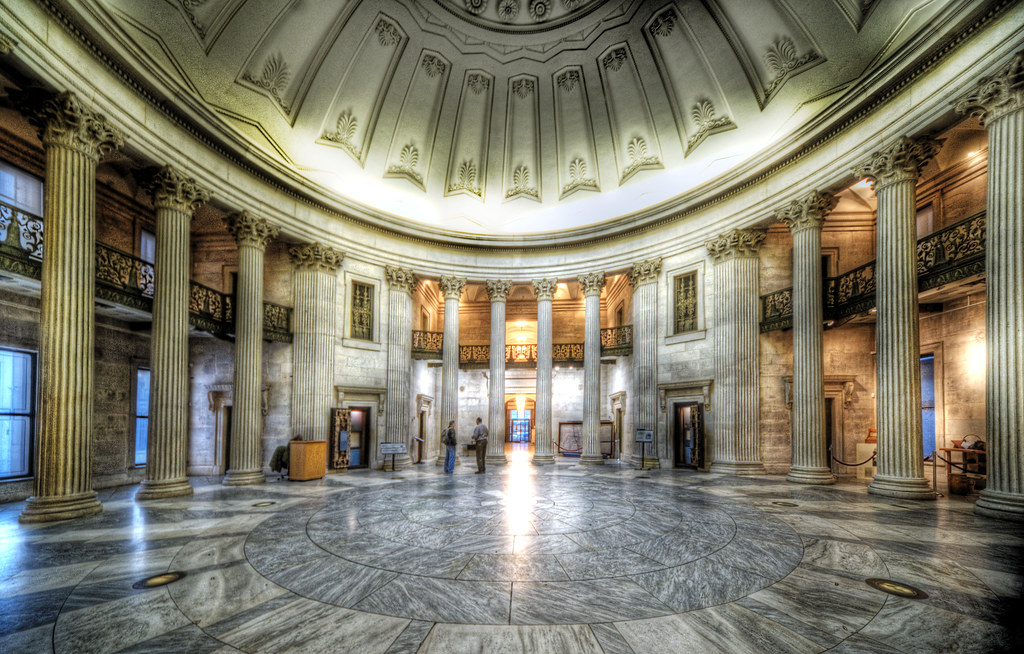
The gift shop has colonial and early American items for sale. Normally its exhibit galleries are open free to the public daily, except national holidays, and guided tours of the site are offered throughout the day. Exhibits include George Washington’s Inauguration Gallery, including the Bible used to swear his oath of office; Freedom of the Press, the imprisonment and trial of John Peter Zenger; and New York: An American Capital, preview exhibit created by the National Archives and Records Administration.
Two prominent American ideals are reflected in the current building's Greek Revival architecture: The Doric columns of the facade, designed by Ithiel Town and Alexander Jackson Davis, resemble those of the Parthenon and serve as a tribute to the democracy of the Greeks; the domed ceiling inside, designed by John Frazee, echoes the Pantheon and is evocative of the republican ideals of the ancient Romans.
The current structure is often overshadowed among downtown landmarks by the New York Stock Exchange, which is located diagonally across Wall and Broad Streets, but the site is one of the most important in the history of the United States and, particularly, the foundation of the United States government and its democratic institutions.